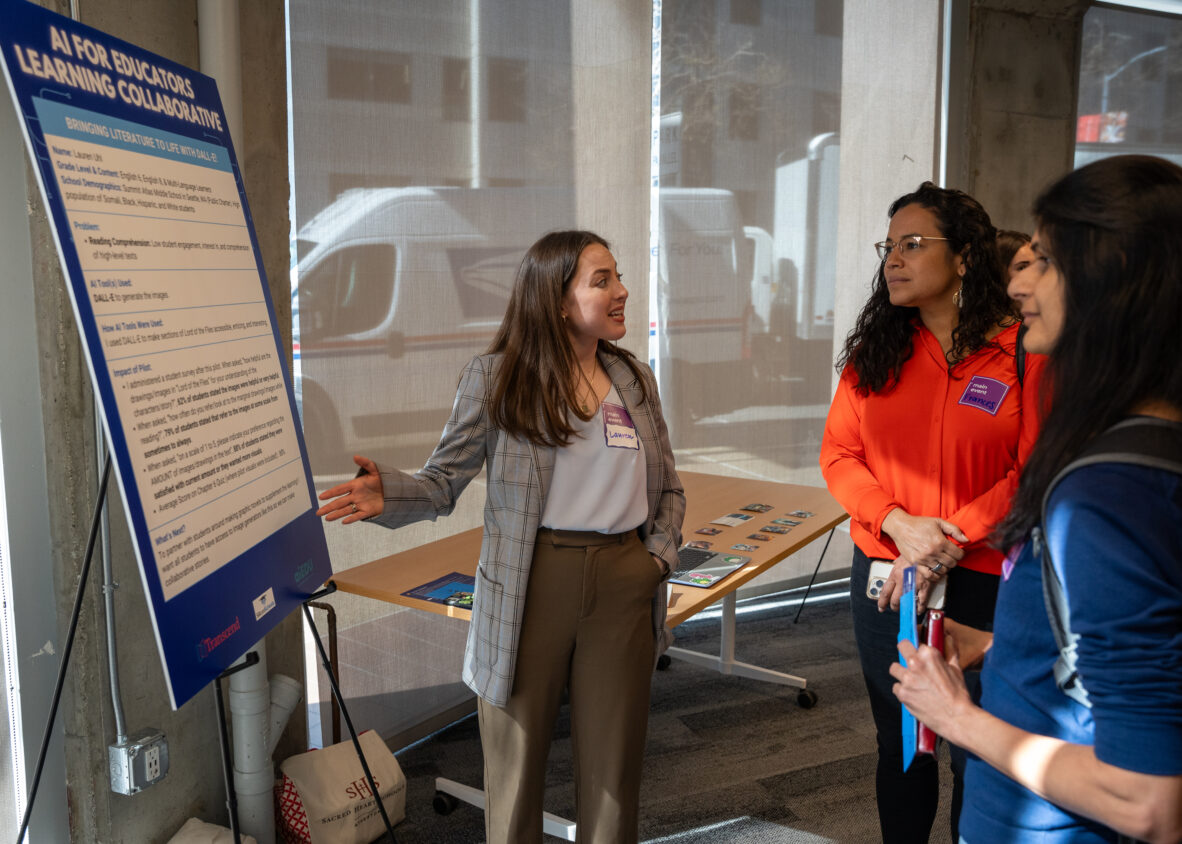3 Ways Educators Can Use AI for Teaching and Learning

Schools, educators, and students across the globe are finding new ways to leverage the promise of artificial intelligence technology. From Da Vinci Schools’ Project Leo, which supports personalized project-based learning, to Los Angeles Unified School District’s personal AI assistant for students, to Playlab’s ability to empower educators to build AI-powered tools and experiences, the possibilities seem endless.
Over the past nine months, Transcend partnered with Silicon Schools Fund and the AI Education Project to lead the AI for Educators Learning Collaborative, an incubator of 15 school leaders and teachers who were eager to explore the cutting edge of how AI could transform teaching and learning. We exposed them to AI tools; taught them Transcend’s frameworks for iterative design; and supported them to build, test, revise, and re-test pilots of new ways to use AI in their classrooms. Last month, we held a Demo Day in Google’s community space in San Francisco to highlight some of what we learned.
The educators’ demos fell into three broad categories:
- Making content more accessible
- Enabling feedback to students
- Creating content
Making Content More Accessible
For educators, fostering student engagement with literary works can be a challenge. Dense narratives, unfamiliar vocabulary, and historical contexts can create a barrier for many readers. AI image generators can be used to enhance reading comprehension and reimagine the way students interact with classic literature.

For example, Lauren Uhl, an English teacher at Summit Atlas Middle School in Seattle, used an AI image generator to bring classic literature like Lord of the Flies to life. By pairing excerpts with AI-created visuals, she saw a surge in student engagement. Surveys reveal they find the images helpful for understanding characters and the story, frequently reference them while reading, and appreciate the enhanced experience. What’s more is that her students saw a jump in their reading comprehension scores.
Enabling Feedback to Students
Many educators in the cohort used AI to both make grading student work more efficient and generate lesson plans, content, and interventions based on that feedback. By leveraging AI’s capabilities for analysis and content creation, teachers were able to identify student needs with greater precision and tailor instruction accordingly.
For example, Annemarie Nucup, a 5th grade math teacher at Rocketship Public Schools/Antioch Unified School District, used AI to identify common mistakes on math assessments and create targeted small group lessons. ChatGPT also helped simplify explanations, making math concepts easier to grasp. This resulted in a score increase as students demonstrated better understanding on assessments.
Creating Content
Educators are using AI to craft differentiated learning materials, like question banks and graphic organizers that closely mirror the specific content and language of assigned texts.
For example, Jessica Barco, an AP History teacher at Summit Atlas High School in Seattle, used AI to transform the way she presented information and supported student learning. She saw her students were struggling with the sheer volume and complexity of the material, leading to frustration and ultimately, a disengagement with the course.
She used AI to develop clear agendas, providing students with a roadmap for each lesson. AI also assisted with crafting discussion prompts for videos, igniting student conversation and analysis. Diffit proved particularly valuable in creating video/text summaries with open-ended questions tailored to specific learning objectives. This not only aided comprehension but also encouraged critical thinking–and boosted student engagement with the course.
Transcend supports communities to create and spread extraordinary, equitable learning environments.

